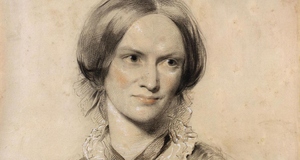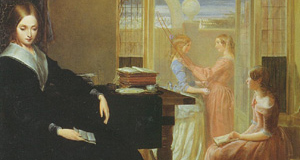Featured Article:Trauma Reenactment in the Gothic Loop: A Study on Structures of Circularity in Gothic FictionA New Perspective on Trauma: An Ever-Present RealityMichelle A. Massé in her study on Gothic repetition makes an important point when, along with a number of other scholars, such as Dani Cavallaro, links the repetitive pattern found in Gothic discourse to Freud’s description of repetition compulsion as described in his study Beyond the Pleasure Principle. As Cavallaro summarizes the Gothic-wise most relevant points, Freud relates repetition to a compulsive tendency to re-enact traumatic experiences, largely repressed, in an attempt to bind their energies and reach a state of balance or even entropy. At the same time, repetitive behavior points to a desire to compensate for a deep-seated sense of lack. Narratives of darkness that hinge on the phenomenon of haunting comment on both facets of repetition. The recursive appearance of ghosts often articulates both the return of the repressed and the longing (having allowed the repressed to surface). (Cavallaro 68-69) Not being entirely satisfied with the resolutions and viewpoints proposed by psychoanalytic interpretations of repression, however, Massé calls for a reconsideration of the original psychoanalytic approach, especially in cases when it is applied to women characters or women’s perspectives within the Gothic tale. She constructs an alternate theory of the final narrative closure instead of the one suggested by traditional psychological interpretations. Mainly, her problem with psychoanalytic readings of Gothic female trauma is the fact that following Freud’s usual practice, these interpretations too tend to offer a resolution that is based on marriage, blaming autonomy, seen as a form of female transgression of a woman’s socially constructed space, as a major cause of anxiety and confusion. Such a resolution, as Massé reveals, provides a reinforcement of women’s suppressed position within society, presenting women’s dependence on male family members as a more rational and natural state (falling within the realm of the “real” as opposed to the “pleasure” principle) than the dilemma-filled, anxious phase of female autonomy. Massé states that “repression-based analyses thus construct a critical fiction that reassures us that most of the heroine’s fears are not ‘real’, while those that are will be erased by the transition from unjust to just authority, by the move from father’s house to husband’s” (Massé 680).When based on such psychoanalytic interpretations, most Gothic tales imply the illusion of a positive closure with the appearance of a male lover or husband-to-be who appears to bring liberation to the heroine after freeing her from the oppressive rule of the father. When reflecting on how in the genre of ‘marital Gothic’ the successive stage is to start the tale exactly where the previous closed, that is, with husbands serving as sources of the same kind of oppression, Massé points out that such a positive closure believed to be ‘working’ in psychoanalytic readings does not really exist. For, as she claims, the “originating trauma” present in the narrative is not a single past event that could, with a closure, be dealt with, but rather it is “the prohibition of female autonomy in the Gothic, in the families that people it, and in the society that reads it. History, both individual and societal, is the nightmare from which the protagonist cannot awaken and whose inexorable logic must be followed” (Massé 682). What Massé suggests here can easily be understood as an extended definition of the notion of trauma, since she considers the term not simply as a single past cause resulting in certain post-effects, but rather as a pervasive force that may remain ever-present and thus, may continue affecting its subject. Massé marks Freud’s theory of repetition compulsion as a useful starting point in the study of Gothic repetitions, but later diverts from traditional psychoanalytic suggestions in favor of an interpretation that is without any relaxing closure, but which is instead characterized by an emphasis on the constant reappearance of the same nightmarish situation. A much truer vision of the Gothic tale can thus be achieved if one realizes that the seemingly ‘convenient’ closure of the narrative is not a final point of status, but only the beginning of the next loop of Gothic repetitions, a loop that is ready to bring forth a modified instance of the same, earlier experienced, situation. That is where the real terror of the literary Gothic arises from, the realization of what Massé referred to as “waking from a dream of trauma to find it re-presented in the real world” (685). The Gothic present can only be imagined in terms of an endless repetition of the same traumatic moment within which the future (and its implied resolution of the trauma) is always represented as necessarily outside of the subject’s reach. Trauma in Massé’s analysis of the Gothic, then, is not restricted to a single, former atrocity, but may take the form of an ever-affecting state: “the heroine of marital Gothic … will always reawaken to the still-present actuality of her trauma because the gender expectations that deny her identity are woven into the very fabric of her culture, which perpetuates her trauma while denying its existence” (684). Massé later offers an analysis of Gilman’s “The Yellow Wallpaper” in which she outlines how that revised theory of repetitions and trauma reenactment operates in case of one particular example of the Gothic tradition. This is the point where I hope to extend Massé’s theory by considering the issue of trauma reenactment within Gothic discourse not only as a gender-specific aspect influencing aspects of female identity or the female Gothic, but as an underlying interest of Gothic fiction encompassing a vast range of cultural and social sites. Representing trauma, regardless of whose or what kind of trauma that is, appears to be one of the chief goals of the Gothic literary convention. Using the Gothic loop as a structural form of representation, the Gothic tale talks of the past in order to revise perspectives, reform identities and vindicate a possible future for its subject. While Massé’s main focus in her study is on the constant trauma of feminine identity, she nevertheless also links trauma reenactments to the Gothic tendency of repetitions when she states that “repetition in the Gothic functions as it does for certain other traumas: the reactivation of trauma is an attempt to recognize, not relish, the incredible and unspeakable that nonetheless happened” (Massé 681). My aim here would be to return to Massé’s analysis, but suggest an extension of it that would consider the looping pattern of the Gothic tradition as a significant structural and representational tool of trauma literature, regardless of the traumatic event or cultural/social environment that generated the work in question. Thus, while Gilman’s short story, analyzed by Massé, is preoccupied mainly with women’s position, its looping pattern can easily be recognized in case of other literary representations, specifically those concerned with traumatic historical events or with the constant sense of trauma associated with marginalized social and cultural groups. This applies especially to the case of the American Gothic tradition whose main interest centers around history and social criticism as opposed to a more fantastic turn. Justin D. Edwards confirms that the American Gothic “has always engaged itself in the national predilection for self-reflection, but from its own position as a voice of the marginals: women, gays, people of color, Americans” (Edwards xxi). The structure of the Gothic loop allows for such a self-reflection exactly because it creates a literary space for examining the relation between past and present through a hypothetical, experimental ‘what if’ scenario where both present-day cultural identities and societies can be brought parallel with their past or even their non-existent, fictional counterparts. That experimental frame of the Gothic loop is a constructive space of trauma reenactments as well, since it calls for a reconsideration (even re-dramatization) of certain historical events or personal memories.Continued on Next Page » Suggested Reading from Inquiries Journal
Inquiries Journal provides undergraduate and graduate students around the world a platform for the wide dissemination of academic work over a range of core disciplines. Representing the work of students from hundreds of institutions around the globe, Inquiries Journal's large database of academic articles is completely free. Learn more | Blog | Submit Latest in Literature |


















